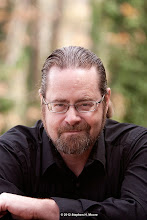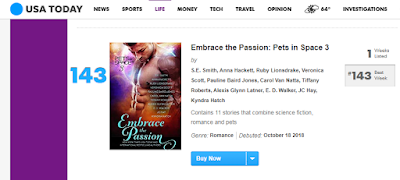Happy Halloween in just a few days! Next week
we’re going to talk about favorite spooky or scary books written by others but I thought it’d be
fun to lead into the week talking about a very unusual, award winning ghost
story I wrote a few years ago.
(I’m ignoring our actual topic of this week,
which is Point of View because I’ve written about it here before on SFF7, I’m
not a fan of anything written in first person, Halloween is coming and there –
I’m done with the subject.)
Ghost of the Nile is one of my “Gods of Egypt” paranormal
series set in ancient Egypt. For quite a while I’d been fascinated with the
idea of writing a story set on an estate in the 1550 BCE era. One of the
interesting things about Egypt was that for literally hundreds of years the
climate and the daily life stayed pretty much the same. Pharaohs came and went
but the more ordinary folk had quite an unchanging routine, linked to the
Nile’s floods. I felt my ghostly hero could return from the Afterlife and fit right
into his old home, although as a guest, not a resident. I thought the
challenges for him could be intriguing.
The Egyptians of 3000 years ago believed that
unless you were buried in the soil of Egypt and had all the proper rituals
recited for you, as well as your name preserved, you couldn’t enter the
Afterlife. So my hero Periseneb, who was murdered and didn’t receive the rites
at the time of his death, has been condemned to roam the fringes of the
Afterlife and wage endless battles against demons and giant snakes.
I’m always fascinated with the goddess Ma’at,
who represented truth, balance, justice…and who happened to be the goddess of
second chances. I’m a Libra myself – scales, balance…. She was one of the
Judges who weighed the heart of a dead person, to see if they deserved the
Afterlife. So I decided she’d need a champion to accomplish some task in Egypt,
and selects Periseneb, who she believes deserves a second chance at entry to
paradise. A favorite old movie of mine is the 1963 version of “Jason and the
Argonauts”. I love how the goddess Hera tells Jason she’ll help him three times
along the way. I decided Ma’at would help Periseneb, and you’ll see in the book
how he has to call for her assistance.
 |
| DepositPhoto |
The next intriguing concept this novel allowed
me to play with was the ancient Egyptian idea of the terrifying nature of
ghosts, or akhs. They believed that a person's soul was split
into various parts, anywhere from three to five. Each part of the soul had
different powers and concerns. For my novel I simplified the situation and
concentrated on the 'intellect as a living entity' portion of the soul and
selected those aspects which worked for the story.
According to Wikipedia, the akh “could do
either harm or good to persons still living, depending on the circumstances,
causing e.g., nightmares, feelings of guilt, sickness, etc. It could be invoked
by prayers or written letters left in the tomb's offering chapel also in order
to help living family members, e.g., by intervening in disputes, by making an
appeal to other dead persons or deities with any authority to influence things
on earth for the better, but also to inflict punishments.”
The hero of my book, Periseneb, is uncomfortable
with being an akh returned to Egypt, and worries a
lot about inadvertently loosing the evil powers he now possesses on the
innocents around him.
And last but not least, there’s the terrifying
goddess or demon Ammit the Destroyer, who was part lion, part hippo and part
crocodile, and known as Devourer of the Dead. I’ve wanted to find a way to
incorporate her into a novel in a meaningful way because she’s so intriguing.
The
story:
Betrayed, murdered, and buried without proper
ceremony, Egyptian warrior Periseneb is doomed to roam the gray deserts of the
dead as a ghost for all eternity.
But then the goddess of truth offers him a
bargain: return to the world of the living as her champion for 30 days. If he
completes his mission, he’ll be guaranteed entry into Paradise. Periseneb
agrees to the bargain but, when he returns to the living world, two hundred
years have passed and nothing is quite as he expected.
Neithamun is a woman fighting to hang onto her
family’s estate against an unscrupulous nobleman who desires the land as well
as the lady. All seems lost until a mysterious yet appealing ex-soldier,
Periseneb, appears out of nowhere to help her fight off the noble’s repeated
attacks.
Meanwhile, Periseneb’s thirty days are rushing
by, and he’s powerless against the growing attraction between himself and
Neithamun. But their love can never be. For his Fate is to return to the
Afterlife, and Death cannot wed with Life…















